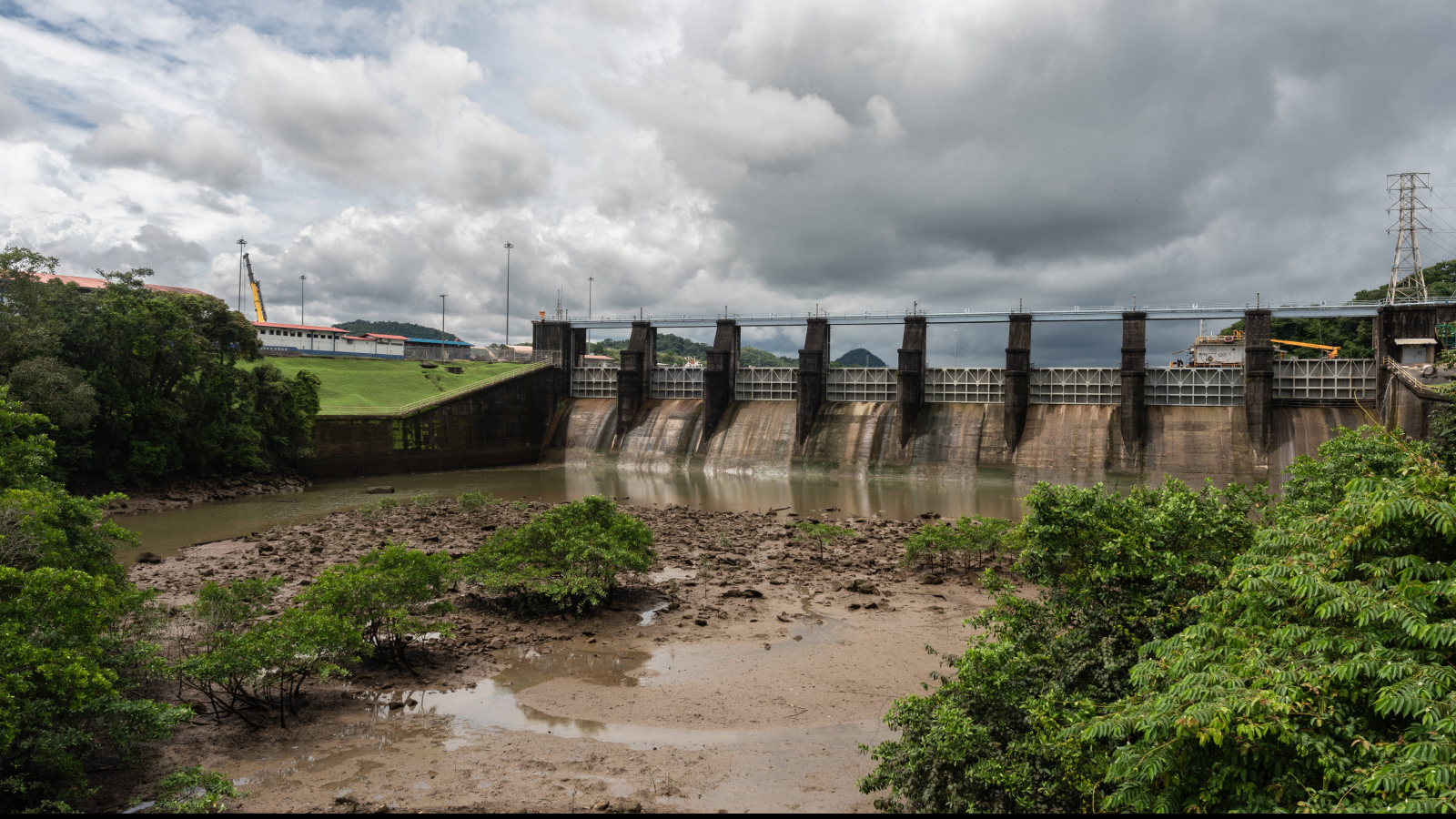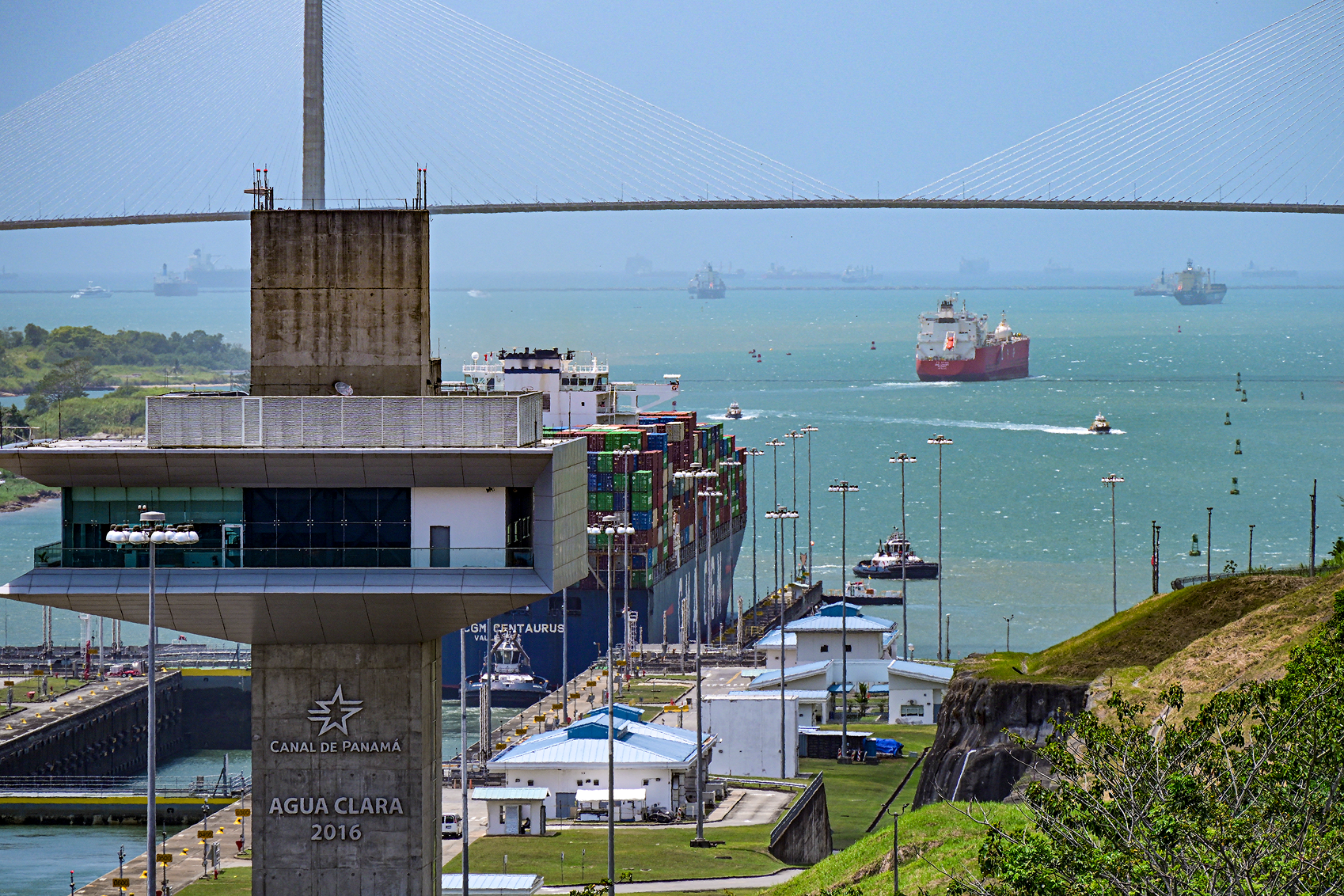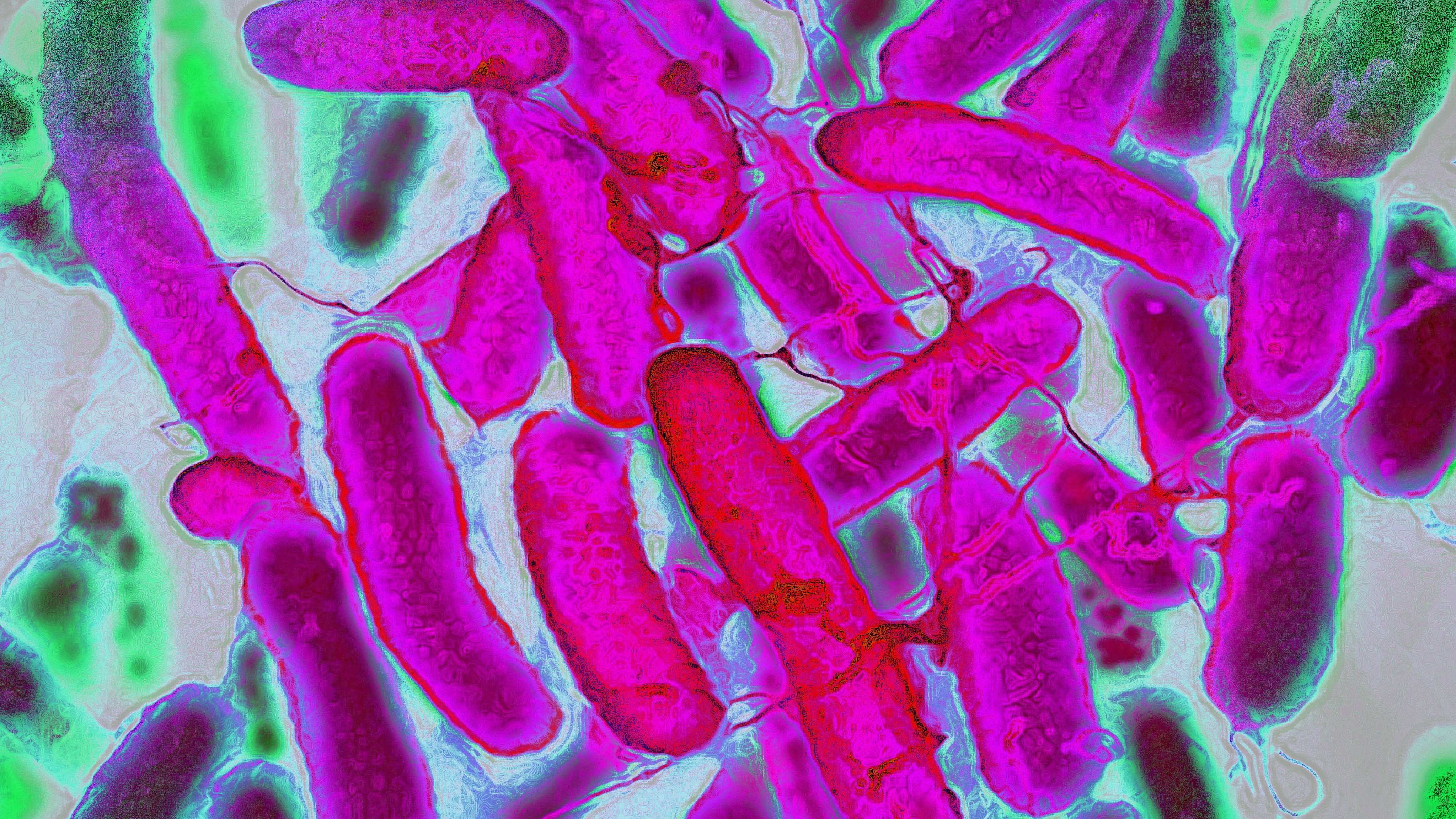The Panama Canal needs a staggering amount of water to operate. Climate change could threaten that, study warns
The vital commercial artery depends on a supply of fresh water to move ships between the two oceans. Drought conditions that were once rare could become common by the end of the century, greatly impacting the canal’s operation.

The Panama Canal — a critical route for global maritime trade — may be at risk from reduced rainfall and increased evaporation due to climate change if greenhouse gas emissions aren't reduced, according to a new study.
Gatún Lake provides the vast quantities of fresh water needed to operate the canal's locks. But researchers found that under a high emissions scenario, or pathway, where greenhouse gases continue to rise, water levels at Gatún Lake will fall significantly over the next 75 years.
They published the findings Sept. 17 in the journal Geophysical Research Letters.
"The more warming we have, globally, the higher [emissions] pathway we go, the less rainfall Panama receives, particularly in that wet season," study lead author Samuel Muñoz, an associate professor at the Department of Marine and Environmental Sciences at Northeastern University, told Live Science. "And then, also, the more warming we have in the atmosphere, the more water loss we have from Gatún Lake through evaporation."
Fresh water, renewed by rains, is critical for moving ships between the Pacific and Atlantic oceans. As ships pass through the Panama Canal, a series of three locks elevates them to 85 feet (26 meters) above sea level. Ships traverse Lake Gatún at this height, then pass through another series of three locks to descend back to sea level.
The canal loses water during the operation of these locks. Relying on the artificially constructed Lake Gatún as a reservoir, water flows down from Gatún into the lock chamber when raising a ship to the lake's level, but water is then discharged, and much is lost when a lock chamber drops a ship toward sea level.
A complete transit of the six locks consumes approximately 50 million gallons (190 million liters) of water. The Panama Canal Authority (ACP) administrator Ricaurte Vásquez previously said the canal consumes roughly two and half times as much water in its daily operation as New York City.
Get the world’s most fascinating discoveries delivered straight to your inbox.
Lake Gatún also serves as the main freshwater reservoir for the Panama City metro area, providing drinking water for approximately 55% of the country’s population.
In 2016, drought caused water levels at Lake Gatún to fall to their lowest ever levels, causing global disruptions to supply chains and leading the ACP to impose draft restrictions on ships transiting the canal between April and June. Another drought in late 2023 and early 2024 also resulted in draft restrictions from the ACP.
In the new study, Muñoz and his colleagues used projections based on four different scenarios of carbon emissions during the 21st century.

The team used average water level measurements and precipitation data between 1965 and 2023, and looked at precipitation and evaporation estimates to create models of future water levels at the lake. They then used this model to create projections of water levels under different climate change scenarios.
The researchers found that under low-emission scenarios, lake levels remained relatively stable. However, under higher emission pathways, low water levels become increasingly common throughout the 21st century. Under the highest emissions scenario, the probability of reaching the level seen in 2016 or lower in any individual year doubled by the end of the 21st century, rising from a 2.5% to a 5% probability.
"For Panama, what that means is that — at least what the models are telling us — is that the amount of rainfall especially during the wet season decreases," Muñoz said.
The findings show that the main driver of reduced rainfall is increasing temperatures in the Pacific Ocean. Complicating the study, Pacific warming is also a characteristic of strong El Niño years, which correlates with scarce rainfall in Panama. It's currently unclear what impact climate change will have on future El Niños and the wider El Niño Southern Oscillation cycle, and potential changes to this system were not included in the study.
"The model projection is not perfect. It's a simulation. It's the best we can do now," Muñoz said.
Steve Paton, the director of physical monitoring at the Smithsonian Tropical Research Institute (STRI) in Panama, has been tracking weather patterns on the Isthmus of Panama for nearly 30 years. Paton, who was not involved in the study, urged caution on reading into its results, saying that the variability in Panama's weather decade-to-decade makes it difficult to identify the effects of climate change.
"It would be very, very difficult to pull out anything and say this is a climate change signal," he told Live Science.
Paton added that the study predicts lake levels based on weather events, but the ACP undertakes activities that affect lake levels as well. For example, during the 2023-2024 drought, the ACP limited ship transits, implemented a draft restriction on ships, and even shipped some cargo across a parallel railway in order to conserve water in the reservoir.
The study authors acknowledge human management of the water reservoir plays a role in water levels but said they could not explicitly include management decisions, citing a lack of public documentation of their history. However, the authors wrote that the study implicitly includes baseline decisions made over the prior decades in managing the reservoir, as the researchers used historical data to build their model.
The ACP is in the process of building a third artificial lake, near the Indio River, west of Lake Gatún, to expand the reservoir. The country estimates the project will cost $1.5 billion and require 10 years to complete, but its construction would expand the water reservoir serving the canal and the Panama City metro area.

Corey Kane is a freelance reporter based in Panama City, Panama. He writes about science, environmental issues, immigration, politics and crime in the region. His work has appeared in EcoAmericas, the Tico Times, Al-Jazeera English and the Houston Chronicle.
You must confirm your public display name before commenting
Please logout and then login again, you will then be prompted to enter your display name.
